Labidochromis caeruleus – Yellow Lab
Labidochromis Caeruleus Yellow is one of the most popular cichlids in our aquarium hobby and is always in demand. Mostly because of its bright yellow colour and peaceful behaviour. Its behaviour makes it a good addition to almost every other Malawi cichlid aquarium. It can be combined with Mbuna, Utaka en even with the more fragile Aulonocara species.
This species was first described in 1956 by G. Fryer, although the description handles not the famous yellow strain but the blue Labidochromis caeruleus. The first specimens caught where light blue Labidochromis caeruleus with 6 dark blue vertical stripes. The name caeruleus refers to its light blue colour. Only later other variants were found among them the white and yellow strains. The word Labidochromis consists of two parts: Labis comes from the Greek and means tweezers and refers to the small beak, chromis is also Greek and means fish.
After the discovery of the yellow strain, they were not exported right away. In 1980 Pierre Brichard took a number of yellows to Bujumbura along Lake Tanganyika to breed them in ponds. After six years he had sufficient numbers to export them. They were sold really expensive under the name Labidochromis tanganicae. This name caused a lot of confusion because it was not certain if this species came from Lake Tanganyika or Lake Malawi. Eventually, this was corrected and the yellow strain got its proper name.
Description
The Labidochromis caeruleus strain we see most in our aquaria is sold under the name of Labidochromis caeruleus Yellow or Yellow Lab. The best show a bright yellow colour on the body and pectoral fins. The dorsal, pelvic- and caudal fins can be deep black where the edge of the dorsal fin has a yellow band. Through the eye, you can see a black diagonal stripe.
Only a few wild-caught species where exported, inbreeding can cause the bright yellow colour to fade. As the fish mature, inbred species can show black spots on the head and body of the fish. Carefully selected species from different bloodlines keep their bright yellow colouration.
The strain that gave this species its name is light blue in colour. This strain is very rare in the shops.
Sexing the fish based on colour is very hard. Both male and female can have the black colouration in their fins, however the black is often deeper black than the black in the females. The dominant male has the deepest black and brightest yellow. A subdominant male can look like a female if you only look at the colour. Sexing is often easier when you look at the dorsal and anal fin. The dorsal and anal fin of the males are pointier, where these fins are more rounded in females. Once full-grown you will see the became larger more heavily built than the female.
Toward other species, Labidochromis caeruleus is very peaceful. You can combine them with most other Mbuna and even with Utaka or Aulonocara. Males can be aggressive to other males so it is advised to just hold 1 male with several females.
Despite their friendly character Labidochromis caeruleus isn’t shy or skittish. They can handle more aggressive or larger species just fine. They just stay out of their way if they can.

Biotope
You can find Labidochromis caeruleus around the entire Lake Malawi but not many local strains have the same bright yellow colouration as we have in our aquariums. The numbers you can find in the wild are also very low. Probably there are more Yellow’s being held in captivity than there are in the wild. Most of our Labidochromis caeruleus originate from just a few specimens. We can still keep the bright yellow colour by selective breeding and only breed with the best specimens.
Diet
Because of its omnivorous diet, it is a very good addition to almost any Malawi aquarium. As long as you feed them a good variety of different foods, Labidochromis caeruleus will do fine. They should be fed with spirulina to make sure they get enough vegetables, flakes, frozen foods like artemia, Mysis, krill, black and white mosquitoes. Better still, give them red mosquitoes or bloodworms as these can cause diseases like Malawi bloat.
The Aquarium
The aquarium for a Labidochromis caeruleus can be set up like you do for any other Mbuna. Use sand as a substrate and use lots of rock creating crevices, holes etc. They are relatively peaceful Malawi cichlids. An aquarium of around 120 centimetres should do to hold 1 male with several females.
You can vary the temperature of the water between 22 and 26 degrees Celsius (72 – 79 Fahrenheit). In Lake Malawi pH ranges from pH 7.5 to 8.5.
You can combine Labidochromis caeruleus with all other Mbuna but also with Aulonocara and Utaka. Many Mbuna are herbivores and will die if you feed them fleshy foods too often, this is not so with Labidochromis caeruleus as long as you as some vegetables to its diet like spirulina or herbivore granulate.
Breeding Labidochromis caeruleus
Breeding Labidochromis caeruleus is relatively easy just like many other Malawi cichlids. They can reach sexual maturity at the age of 6 months or 5 centimetres.
Males have no territory. As soon as a male notices a female that is willing to spawn he will try to lure her to a random spot between the rocks. They make circles around each other until the female is ready to spawn. The circling slows down and the male drags his anal fin over the bottom. The anal fin shows some egg spots, the female thinks they are eggs and tries to grab them. The female lays an egg and while circling she takes the egg in her mouth. They keep circling and the male shows his anal fin again. The female tries to pick up the egg spots on his fin. He releases his sperm that will fertilise the eggs in her mouth. This will continue until all eggs are safely hidden in her mouth.
The female breeds the eggs in her mouth. The eggs will hatch in a couple of days but the fry will remain in her mouth for 21 to 28 days after spawning. They feed on their yolk sack. She then spits out the fry that already shows the yellow colour. In an aquarium without other fish the female will take care of the fry for another week, the fry will seek refuge in her mouth from time to time. Make sure to feed the female enough to prevent her from eating the fry. You can also remove the female, the fry can take care of themselves as soon as the female has to spit them out for the first time.
Most breeders put the holding females in a separate aquarium after two weeks of breeding. These aquariums have a bare bottom but provide some shelter creating a cave with some rocks. The female can breed and take care of the young without being disturbed. During the 3 to 4 weeks of breeding, the females won’t eat at all. By moving the holding females to the separate aquarium you will have more surviving young than in your show aquarium. The female won’t eat the young for the first couple of hours after she spits them out but others will!
Videos
Author
John de Lange
Copyright photos
John de Lange



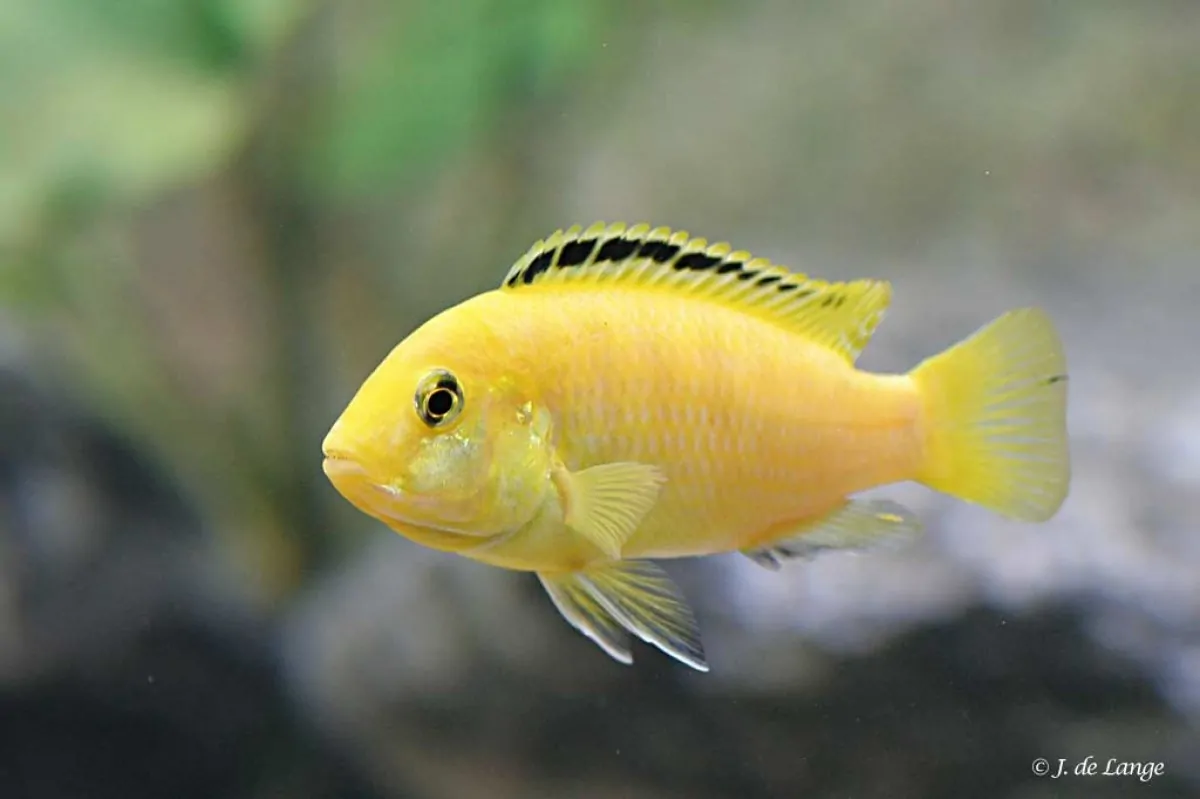

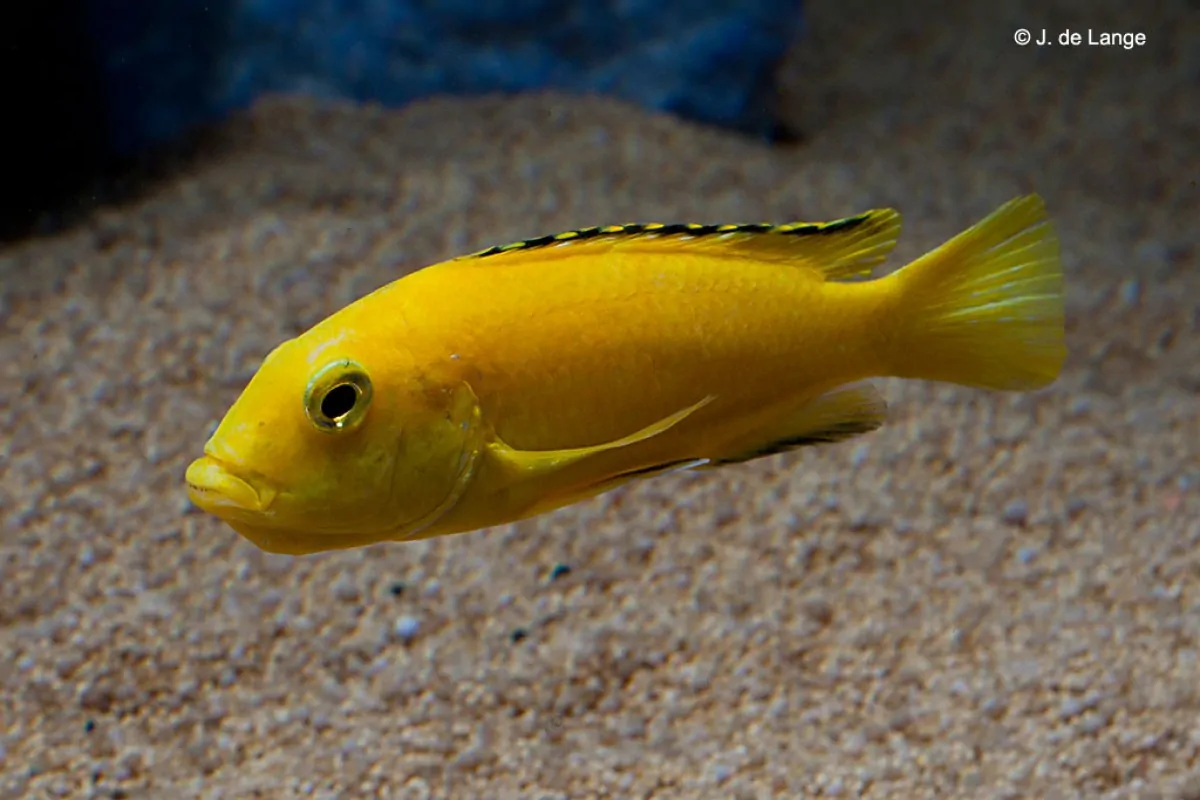



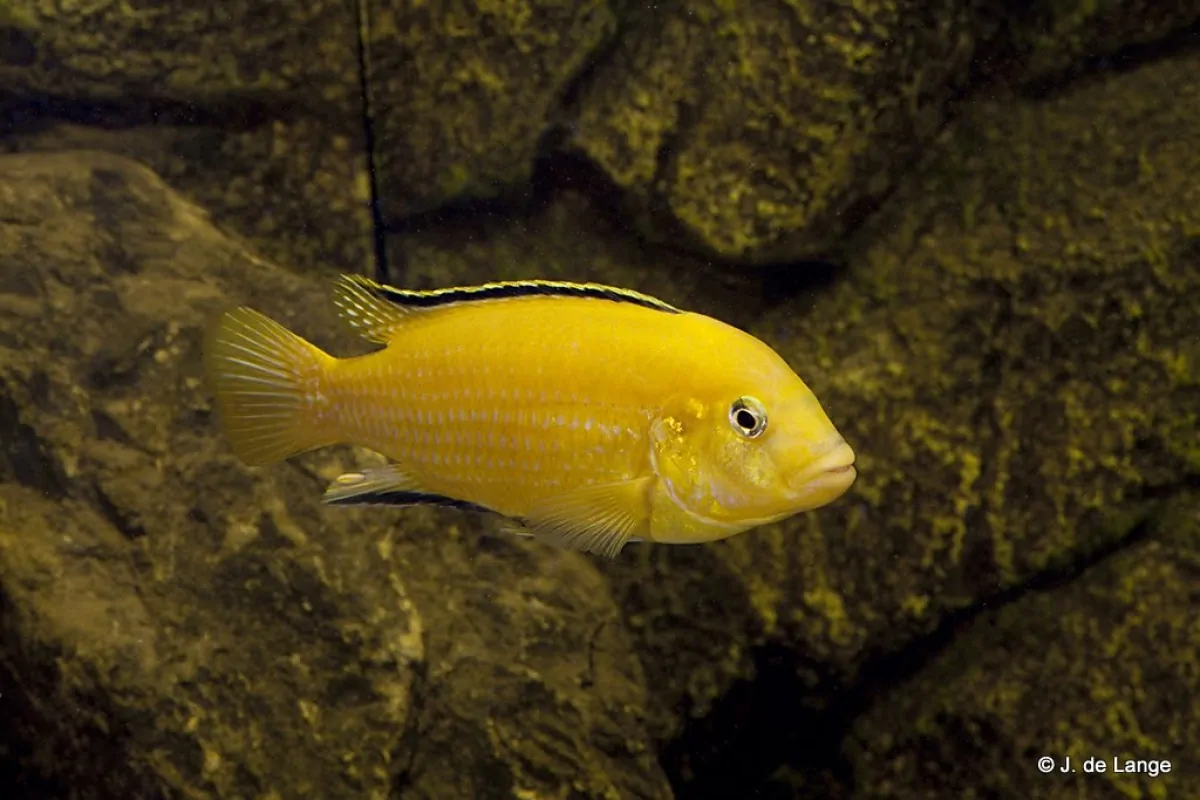









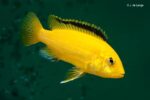








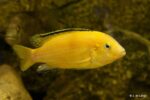



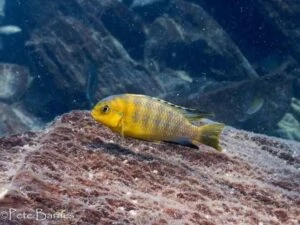


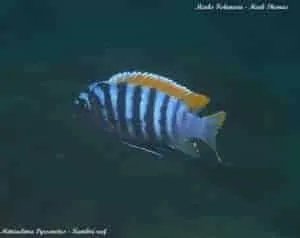

Reviews
There are no reviews yet.